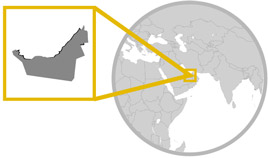Religion
Austria’s largest religion is undoubtedly Roman Catholicism with over 62% of the population claiming to follow the faith. A further 6% of the population claim to be followers of Orthodox Christianity and around 4% are Protestant Christians. Islam also represents around 4% of the population and Buddhism is believed to hold a significant number of followers.
Paganism, mainly Druidic, Wiccan, Germanic Heathen and Witchcraft has also seen a rise in the last decade. Around 12% of the population are proclaimed atheists and the remaining percent claim to be agnostic or undecided in their faith.
Museums, Galleries & Architecture
Austria’s architectural heritage is vast and old, dating back hundreds of years as far back as the 13th Century when the Gothic-style Cathedral Monoritenkirche was constructed in Vienna. The country also sports multiple palaces including the Baroque-style Belvedere and the Rococo-style Schonbrunn, as well as the Stephansdom, one of the world’s tallest cathedrals and seat to the Archbishop of Vienna.
Other interesting sights include the Semmering Railway which is widely known as the world’s first true mountain railway, and, despite being constructed back in 1848, is still used today with modern train carts. The cities of Austria are also famous for their historic notation and artistic stylization and the cities of Salzburg and Graz, as well as the capital city of Vienna, are often reflected upon by architects looking for inspiration from less contemporary sources.
Clothing, Dress Style & Etiquette
Austria shares many of its historic clothing styles with other Germanic European nations, most notably Germany, with traditional ware including the Dirndl (an outfit based on the historical costume of Alpine peasants and includes a blouse, bodice, apron and skirt) for women, the Tracht (an outfit based on the historical costumes of farmers and rural dwellers including a shirt, blazer, loose shorts and long socks), the Loden Cape (a thick fur jacket traditionally bluish-green in colour) and the Tyrolean Hat (similar to a fedora but usually sporting one, two or more feathers and/or buttons).
However, today most people, especially in main cities, wear standard western-style wear and the above outfits are reserved more for special occasions, celebrations and national holidays.
Literature, Poetry, Music & Dance
Musical innovation is considered to have started in Austria with many of history’s greatest musicians including master pianist Ludwig van Beethoven, prolific violinist Johann Strauss II and prodigal composer Wolfgang Amadeus Mozart. The three of them are known to have spent a great deal of their lives in the city of Vienna and thus it’s no wonder that one of the world’s top three concert halls, the Musikverein, is located squarely in the city.
Other traditional forms of music that stray from classical music include the Schrammelmusik (folk music played with an accordion and a double-necked guitar) and Yodeling (a type of throat singing developed in the Alps), as well as modern music such as Austropop (featuring artists such as DJ Otzi, Bauchklang and Austria3) and Alpine New Wave (a punk rock genre).
Dance includes Austrian Folk Dancing (mainly the Polka, Waltz, Kontratanze and Schuhplattler) and Landler (a predecessor to the waltz which features almost intimate contact between members of the opposite sex).
Austria’s literature is almost as detailed as it’s musical heritage with both pre and post Austro-Hungarian and German Imperial eras featuring notable writers such as Franz Werfel, Arthur Schnitzler, Elffreide Jelinek, Adalbert Stifter, Thomas Bernhard and Peter Handke. Austria is also prominent in its literature scene due to its historical playwrights, many of which mirror Shakespeare in prowess.
Calendar & Events
New Year’s Day is celebrated first of all with a bank holiday on the 1
st of January; this is followed by the Christian-originating Epiphany on the 6
th of the same month.
At the end of March to the middle of April, Easter is celebrated and this in turn is followed by May Day on May 1
st, and then the Christian-originating Ascension Day on a differing day throughout the same month. Then, White Monday is celebrated on the first Monday following Ascension Day and Corpus Christi is celebrated on the second Thursday following that.
On the 15
th of August, the Assumption of the Virgin Mary is celebrated. Then in October, the country gets another national holiday on the 26
th.
In the last half of the year, All Saints’ Day is celebrated on the 1
st of November, the Immaculate Conception is celebrated on the 8
th of December and then Christmas Eve, Christmas Day and Boxing Day are celebrated on the 24
th, 25
th and 26
th of December respectively.

